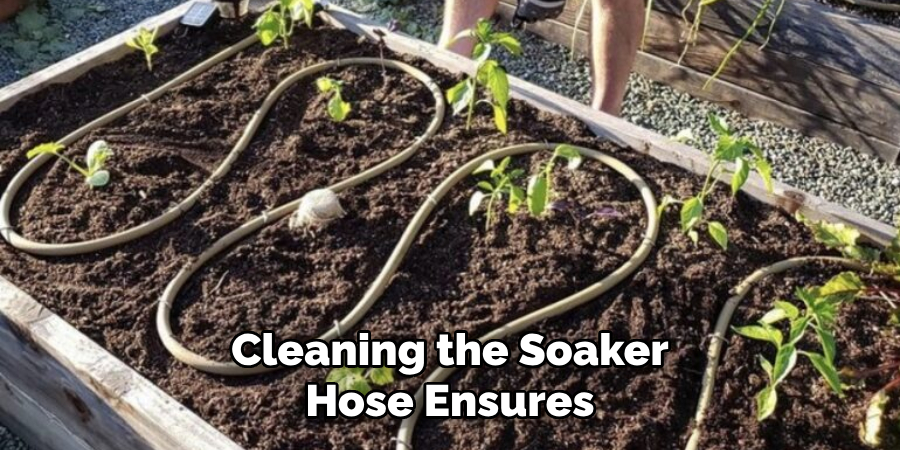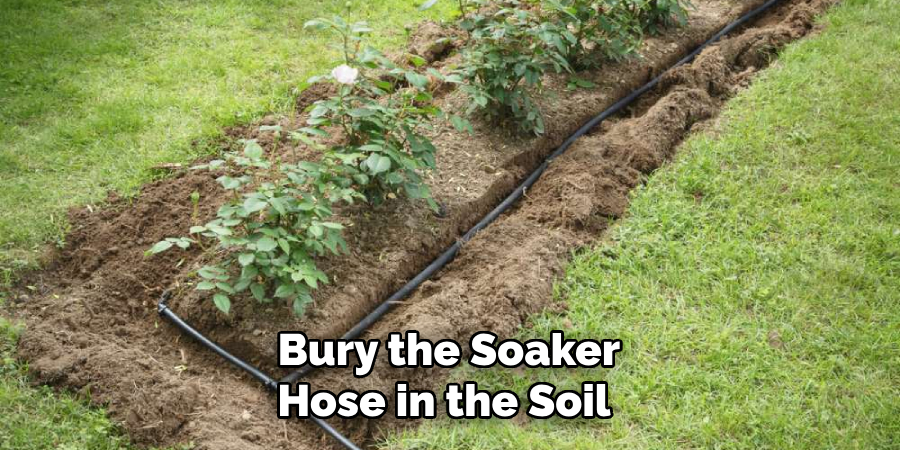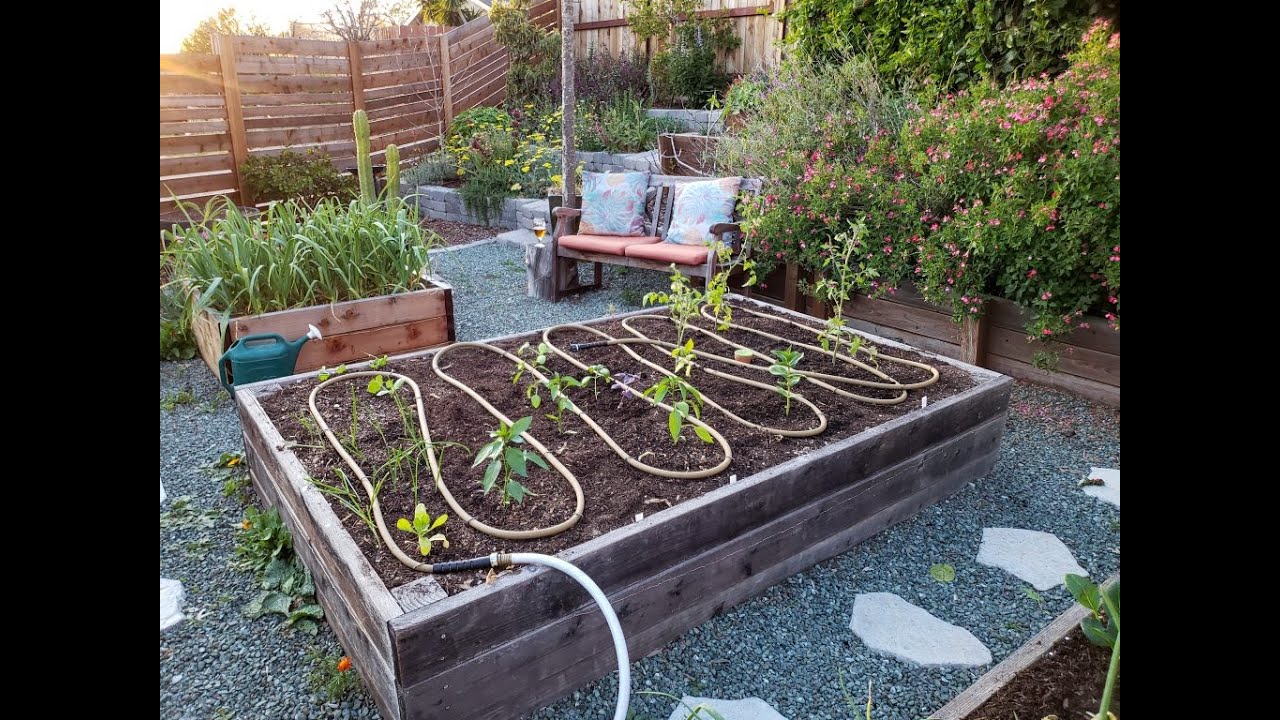To use a soaker hose in raised beds, place the hose alongside the plants and cover it with mulch for efficient irrigation. Soaker hoses are an effective way to deliver water directly to the root zone of plants in raised beds, ensuring deep and thorough watering.
By following a few simple steps, you can effectively utilize a soaker hose in your raised beds to promote healthy plant growth and conserve water. 1. Choose a suitable soaker hose that is long enough to cover your entire raised bed.
2. Lay the soaker hose alongside your plants, ensuring it is evenly spaced and covers the entire bed. 3. Cover the soaker hose with a layer of mulch to prevent evaporation and keep the soil moist. 4. Connect the soaker hose to your water source and turn on the water to allow it to slowly seep into the soil. 5. Monitor the moisture level of the soil and adjust the watering schedule as needed to maintain optimal moisture levels. By properly using a soaker hose in your raised beds, you can provide consistent and efficient irrigation to your plants, resulting in healthier and more productive growth.

Credit: www.epicgardening.com
Benefits Of Using Soaker Hose In Raised Beds
Soaker hoses are a great addition to raised beds, providing various benefits. They increase efficiency and conserve water by delivering moisture directly to plant roots. This promotes even water distribution, preventing soil erosion and runoff. Besides, using a soaker hose in raised beds saves time and effort compared to traditional watering methods.
The slow release of water ensures plants get the moisture they need without wasting any. Additionally, it eliminates the need for manual watering and reduces the risk of over or under-watering. With soaker hoses, you can easily maintain a consistent level of moisture in your raised beds, leading to healthier plants and a thriving garden.
How to Use Soaker Hose in Raised Beds: Step by Step Guide
Choosing The Right Soaker Hose For Your Raised Beds
Choosing the right soaker hose is crucial for maximizing the benefits of raised beds. Remember to consider the length and diameter based on your specific needs. It’s important to prioritize material and durability when selecting a soaker hose. Explore different brands and options to find the best fit for your raised beds.
Lastly, evaluate the price and quality of the soaker hose to ensure you’re getting a good deal. By following these guidelines, you can make the most out of using a soaker hose in your raised beds. Enjoy the convenience and efficiency of this irrigation method!
Installation Steps For Soaker Hose In Raised Beds
Installing a soaker hose in raised beds requires a few simple steps. First, prepare the raised bed area by clearing any debris or weeds. Next, position the soaker hose properly, ensuring it is placed evenly throughout the bed. Connect the soaker hose to a water source, either by attaching it directly or using a splitter if needed.
Finally, test the soaker hose system by turning on the water and checking for any leaks or uneven water distribution. By following these installation steps, you can ensure that your raised beds receive the proper amount of water, promoting healthy plant growth.
Soaker hoses are a convenient and efficient way to water your garden beds, as they deliver water directly to the roots and reduce water wastage. Incorporating them into your raised bed gardening routine can save time and help conserve water resources.
Best Practices For Using Soaker Hose In Raised Beds
Using a soaker hose in raised beds requires following best practices. Determine watering frequency and duration based on your plants’ needs. Monitor soil moisture levels regularly to prevent under or over-watering. Avoid over-watering and waterlogged beds, as it can harm your plants.
Mulching and insulating the soil can help retain moisture and regulate temperature. Following these guidelines will ensure optimal use of a soaker hose in your raised beds. Remember to adapt the watering schedule depending on the weather conditions and specific plant requirements.
Happy gardening!
Troubleshooting Common Issues With Soaker Hose
Troubleshooting common issues with soaker hose involves identifying leaks or blockages quickly. Adjust the water pressure accordingly to resolve any problems. Fix clogs and breaks as soon as possible to ensure optimal performance. If the soaker hose is damaged beyond repair, consider replacing it altogether.
Maintaining And Cleaning Soaker Hose
Regular inspections and maintenance checks are crucial for maintaining and cleaning soaker hoses. It is essential to regularly inspect your soaker hose to ensure there are no leaks or damages. Flushing the hose with clean water helps remove any debris or clogs and maintains its functionality.
Cleaning the soaker hose ensures that it continues to deliver water efficiently to your raised beds. During off-seasons, it is advisable to store the hose properly to prevent any damage or deterioration. Following these maintenance practices will help prolong the life of your soaker hose and ensure optimal performance in irrigating your raised beds.

Keeping your soaker hose in good condition is essential for the success of your gardening efforts.
Additional Tips For Maximizing Soaker Hose Efficiency
Soaker hoses are a great tool for watering raised beds efficiently. To maximize their effectiveness, consider grouping plants with similar watering needs. This ensures that each plant receives the appropriate amount of water. Additionally, using timers for automated watering can save you time and effort.
Simply set the timer to water the beds at specific intervals. Another tip is to combine the soaker hose with drip irrigation systems. This combination allows for targeted watering of individual plants. Lastly, be mindful of the positioning of your raised beds.
Place them in an optimal location that ensures even distribution of water. By following these tips, you can make the most out of your soaker hose and maintain healthy plants in your raised beds.
Frequently Asked Questions Of How To Use Soaker Hose In Raised Beds
Can I Use A Soaker Hose In Raised Beds?
Yes, a soaker hose is an excellent option for watering raised beds. It provides a slow and even release of water directly to the root zone, promoting healthier plants and conserving water.
How Do I Install A Soaker Hose In Raised Beds?
To install a soaker hose in raised beds, lay the hose along the base of the bed, making sure it covers the entire area. Secure it with garden stakes or clips, and connect it to a water source. Adjust the water pressure to achieve a slow and steady drip.
How Often Should I Water My Raised Beds With A Soaker Hose?
The frequency of watering will depend on factors like weather, plant type, and soil moisture levels. As a general guideline, water your raised beds with a soaker hose 2-3 times per week, ensuring the top few inches of soil remain consistently moist.
Can I Bury The Soaker Hose In The Soil?
Yes, you can bury the soaker hose in the soil of your raised beds. This method helps deliver water directly to the plant roots and prevents evaporation. Make sure to cover the hose with a layer of mulch to protect it and improve moisture retention.

Conclusion
Soaker hoses are a game-changer for raised beds. They provide a convenient and efficient way to water your plants, ensuring they get the moisture they need without wasting water. By delivering water directly to the roots, soaker hoses prevent evaporation and runoff, helping to conserve water and save you money on your water bill.
Plus, they can be easily customized to fit the size and shape of your raised beds, allowing for precise watering. Whether you’re a seasoned gardener or just starting out, incorporating soaker hoses into your raised bed irrigation system will undoubtedly simplify your gardening routine and produce healthier, thriving plants.
So, ditch the traditional watering methods and give soaker hoses a try. Your plants will thank you!

